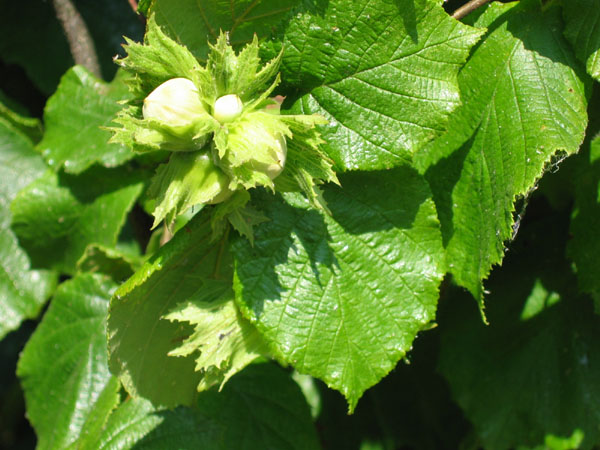In past blog entries, we discussed both agroforestry and non-timber forest products. This month, we’ll spend a little time combining the two with an introduction to hazelnuts. Anyone who has had the pleasure of harvesting wild hazelnuts, and adding them to baked goods, knows how tasty these nuts are. They are even tastier in Nutella, yum. Although 90% of the hazelnuts we see in commercial products are grown in Turkey, and another 4% in Oregon, Wisconsin and Minnesota are seeing a rise in the production as well.
In past blog entries, we discussed both agroforestry and non-timber forest products. This month, we’ll spend a little time combining the two with an introduction to hazelnuts. Anyone who has had the pleasure of harvesting wild hazelnuts, and adding them to baked goods, knows how tasty these nuts are. They are even tastier in Nutella, yum. Although 90% of the hazelnuts we see in commercial products are grown in Turkey, and another 4% in Oregon, Wisconsin and Minnesota are seeing a rise in the production as well.
In Wisconsin, we generally see two species of hazelnuts: American (Corylus Americana) and beaked (Corylus cornuta). Both are considered shrubs, rather than trees. As their popularity here grows, we are seeing more hybrids as well. The most common hazelnut, European, does not fair well in our cold climate. Traditionally hazelnuts are found in well-drained soils, doing particularly well in sandy areas. Hybrid hazels are more tolerant of a variety of soils other than frequently flooded soils. They produce best in full sun, but can handle some slight shade. In the wild, they will grow in jack pine, birch, aspen and oak forests. Hazelnuts can reproduce from root or stump sprouts, and you can boost nut production by coppicing (cutting back to ground level) the plants. It takes about 4-5 years before newly planted seedlings, will start nut production, and are harvested in the fall.
There is a weevil that gets into the nuts, so it is recommended to harvest early and let the nuts finish ripening in storage. Rodents will chew on the trunk, girdling and killing trees. This can be prevented by mowing or otherwise controlling grass and weeds growing along the trees.
There are several reasons to plant hazelnuts. They can provide a nice transition between a house and woodlands, while providing food for both us and wildlife. They could also provide some privacy between a house and a road, while having the food benefits as well. A variety of birds, squirrels and chipmunks are attracted to the nuts. (They can also be competition for your own harvesting, so you’ll have to beat them to the punch if you want some.)
Hazelnuts are the second largest nut crop worldwide being used in confectionery, coffee, oils, and eaten raw and roasted. Unfortunately, harvesting and processing nuts for wholesale is the biggest challenge currently facing growers in the Midwest. Those growing the nuts for commercial uses are finding better luck in small, direct markets.
The production of hazelnuts in Wisconsin is still a fairly new enterprise. Many landowners are choosing to try growing hazel shrubs purely to try something new. There is some support out there for those interested in learning more, and getting some assistance. The website http://www.midwesthazelnuts.org/ is supported by the University of Wisconsin-Extension, and includes some research currently being conducted as well as some good information on getting started. You can also find a radio show (search for 3/19/2010 or hazelnuts on this site) featuring two UWEX colleagues talking about growing hazelnuts. Badgersett is a company in MN that grows and sells hybrid hazel shrubs, and they also have more information on getting started.
